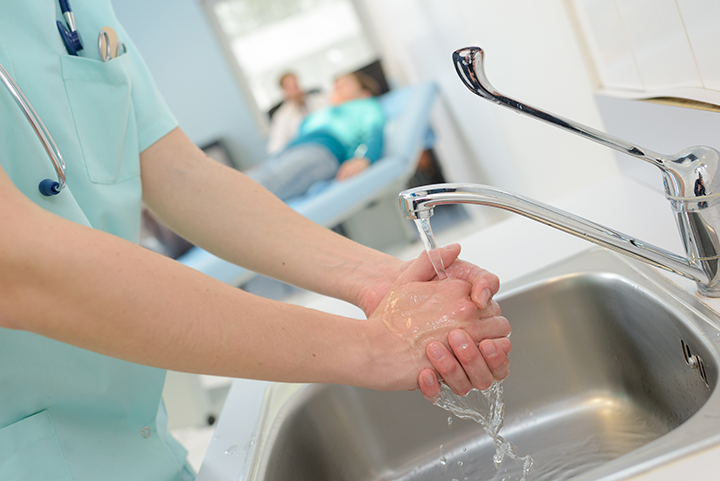
Sensing an Opportunity to Reduce Infection Rates
It is an unpleasant statistic: Annually, about 1.7 million patients in American hospitals are affected by health care-associated infections, according to the World Health Organization. Hand-washing – or the lack thereof – by staff plays a significant role in the rate of incidence of such infections.
While hospitals have implemented protocols to ensure staff regularly wash their hands, compliance monitoring can be time-consuming, cumbersome and ineffective. As student researchers were monitoring sensors designed to detect footsteps as part of a project for CEE professor Hae Young Noh several years ago, they made an unexpected discovery: The sensors detected vibrations from the sink in a nearby bathroom. The data showed that someone in the bathroom washed their hands.
Throughout the summer, third-year CEE undergraduate student Sarah Hamilton has been working with PhD student Jonathon Fagert to research whether these vibration sensors can collect relevant data on a variety of sink and counter surfaces. The end-goal, if the research proves fruitful, is for the sensors to be installed in hospitals to help ensure hand-washing protocols are observed in an effective manner.
Hamilton has been responsible for collecting vibration signal data from the sensors. She then uses MATLAB to analyze the data to determine how to separate and classify the signals from each of the different steps in handwashing. By accurately classifying the different signals, it can be determined if hands were washed, and, importantly, if they were washed sufficiently.
This was Hamilton’s first research project at CMU, and she says it has been rewarding to be trusted to be as intimately involved in the project as she has.
“Getting involved in research has been valuable, because it helped me figure out how to learn on my own and how to be more creative with problem solving,” Hamilton says. “This open-ended way of learning has showed me how many ways there are to go about solving any problem, and that if you want the best possible solution, you can’t be hesitant to try new things.”
Fagert, who has been working with professor Noh on the sensor research for several years, says being involved in research, especially in a collaborative environment like CMU, allows students to learn outside their field of study.
“It gives you more perspectives” says Fagert, adding that when a researcher looks at a challenge exclusively from their discipline, they may not see the world of possibilities to address the challenge. By working with people from different fields of study, researchers can discover new ways to approach challenges and develop solutions.
Fagert says he plans to write a journal article on the results of this phase of the research project, and hopes to move to the next phase during the next calendar year. In the meantime, Hamilton says she hopes to continue to be part of the project.